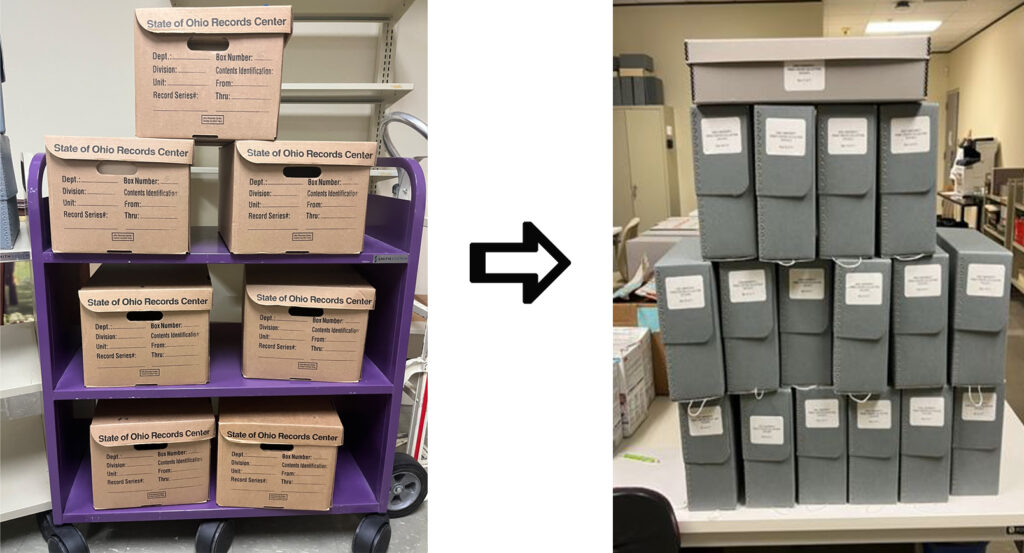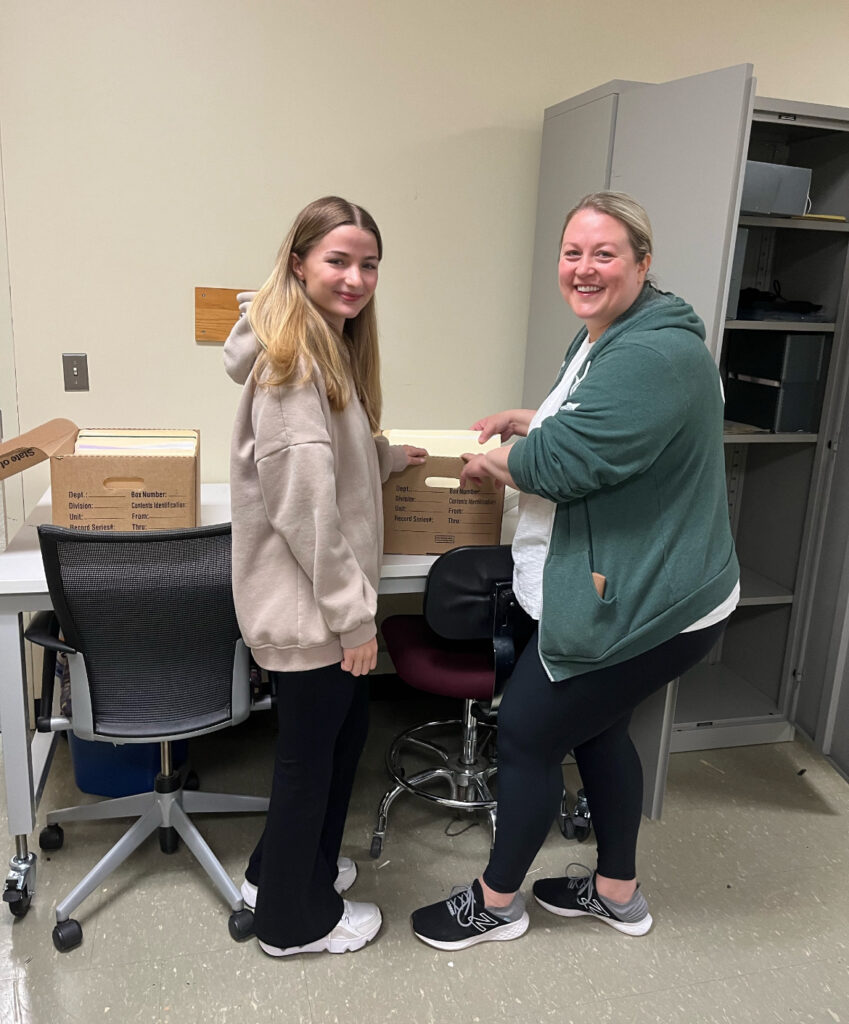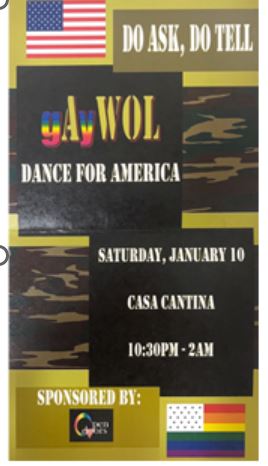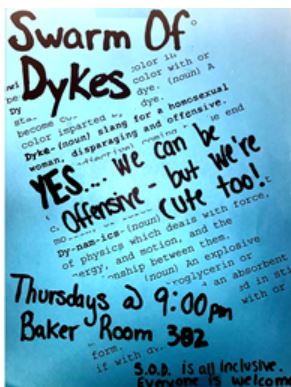By Chloe Haught, Spring 2024 University Archives Intern
In Spring 2024, for six hours each week, I had the pleasure of interning at the Mahn Center, during which time I began and completed the processing of two collections—The Cutler Hall Rededication Collection and the Ohio University Pride Center Collection—which were of vastly different sizes and content. However, despite these obvious physical differences in the collections, both projects collectively taught me a great deal about archival work.
The preliminary processing work for both collections was very similar, as they needed to be preserved and organized in a way that would be most useful and sustaining for future researchers. For each collection, metal fasteners such as clips and staples must be removed from documents as their corrosive nature renders them among the many potential adversaries to document preservation. This work is often slow and repetitive, but it is nevertheless a crucial, necessary step in any archival work. Moreover, at first glance, any differences in physical characteristics of mere seemingly ordinary staples might seem to the uninitiated aspiring archivist to be of minute significance and consequence. However, I quickly developed a radical bias in favor of certain varieties of staples that were easiest to remove and an emotional aversion to those staples which gave me trouble. This, of course, was a development I had never suspected would arise during my archives learning process. To further inhibit wear and tear of the collection, I transferred materials from old, worn standard manila folders and cardboard boxes into acid-neutral folders and acid-neutral Hollinger Boxes.

The Ohio University Pride Center Collection, 1972-2013
After processing the Cutler Hall Rededication Collection, I spent the remainder of the spring semester processing a collection from the Ohio University Pride Center (formerly the LGBT Center). In its raw, virtually unprocessed form, this collection filled seven intimidatingly large, one cubic foot boxes and was loosely organized, mostly by year. The collection’s contents are a wide array of document types including entire newspapers and newspaper clippings, posters, flyers, photographs, magazines, and more. While processing the Cutler Collection had already introduced me to the basics of archival work, the Pride Center Collection turned out to be around sixteen times larger than the Cutler Hall Collection, and it was a fair deal more complex. After assessing the contents of each box briefly, I decided to just dive in and went box to box organizing and filing the documents, all the while reassessing and combining files as I moved onto each new box. This is how I spent most of my time for several consecutive weeks with the collection before finally identifying, refining, and rehousing the materials in during the last few weeks of my labor.

The relatively enormous historical content and variety of information found in this collection is astounding. There are, for instance, documents detailing the founding of the Pride Center and its evolution from a meager quarter-time administrated organization to its development as a significant, officially recognized and lively force of student life on the OHIO campus.

The Center’s work in the community, as well as the support it provides to the various LGBT+ student organizations, is detailed within the collection. A good portion of the collection houses documents, photographs, fliers, and other materials from various Ohio University and Athens LGBT+ organizations and programs including Open Doors, SHADES, Swarm of Dykes, Delta Lambda Phi, GLOBE, and so many more. These organizations, while often overlapping in their missions and purposes, all nevertheless fill their own specific niches in providing different services and platforms for LGBT+ students by organizing educational and entertainment events, creating safe spaces on campus and beyond, and helping to strongly advocate for increased awareness of LGBT+ issues within the university. For example, the need for increased inclusivity and safe spaces at the university can be seen through reports that detail incidents of harassment against LGBT+ students.

Advances and improvements in OHIO student life that have been promoted by the Pride Center include the addition of gender-neutral housing and bathrooms across campus, as well as the establishment of domestic partner benefits. Many of the LGBT+ related organizations also planned fun events for students such as dances, lunches, and guest performances. Thus, as the collection demonstrates, the work of the Pride Center and other the LGBT+ organizations that it encourages and supports has continued to this day far beyond the scope of this collection.